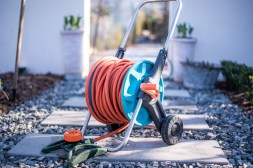How to Protect Your Pets from Wildlife: A Comprehensive Guide
As pet owners, it’s natural to want to keep our furry friends safe from harm. One of the biggest threats they may face is wildlife encounters. Whether it be a curious raccoon, a wandering coyote, or even a venomous snake, wild animals can pose serious dangers. In this comprehensive guide, we’ll explore the best practices for keeping your pets safe from wildlife encounters and ensuring their well-being while enjoying the great outdoors.
Understanding Wildlife Risks
Wildlife encounters can lead to various issues ranging from minor injuries to severe health risks for your pets. Animals like raccoons and skunks can transmit diseases such as rabies through bites or scratches. Larger predators such as coyotes might pose physical threats if they feel threatened or are protecting their territory. Understanding which wildlife is common in your area and the potential risks they pose is crucial for effective prevention.

Supervision is Key
One of the simplest yet most effective ways to protect your pets from wildlife encounters is through supervision. Always keep an eye on your dogs when they are outside, especially in areas where wild animals are likely to roam. For cats that enjoy outdoor explorations, consider using a leash or harness during supervised outings in secure areas. This not only provides safety but also allows you more control over their environment.
Secure Your Property
A well-maintained yard can significantly reduce the likelihood of unwanted animal visits. Fencing should be high enough and extend underground (if possible) to deter digging animals like foxes or raccoons. Regularly check for holes or gaps where wildlife could enter your space; sealing these openings will prevent access by potential predators looking for food or shelter.
Keep Food Sources Away
Wildlife is often attracted by easy food sources around homes—think pet food left outside, garbage cans not secured properly, and bird feeders that aren’t maintained. Make sure any pet food bowls are brought indoors once mealtime has ended and secure trash bins with tight-fitting lids to avoid attracting curious critters looking for an easy meal.
Training Your Pets
Training plays an essential role in keeping your pets safe from wildlife encounters as well. Teach them commands like ‘come’ and ‘leave it’ which can be invaluable during unexpected situations with wild animals nearby. Socialization with other animals can also prepare them better for interactions outdoors; however, it’s important that they learn how to respond appropriately when encountering unfamiliar creatures.
By understanding the risks associated with wildlife encounters and implementing preventative measures such as supervision, securing your property, managing food sources effectively, and training your pets accordingly, you can significantly reduce the chances of dangerous interactions between them and wild animals. With these strategies in place, you’ll have peace of mind knowing that both you and your beloved pets can safely enjoy time outdoors together.
This text was generated using a large language model, and select text has been reviewed and moderated for purposes such as readability.


